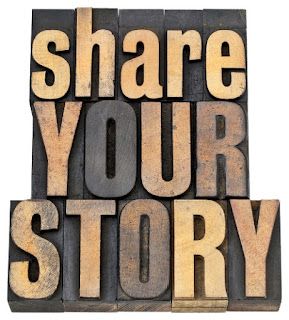7 Reasons from Neuroscience which make Storytelling Powerful
Storytelling is an art which has the backing of science,
neuroscience to be precise. All that we remember from our childhood are stories
(incidents /anecdotes). As soon as the word ‘story’ comes, even our tired brain
gets alert ready to listen and retains it in memory. Even at the end of a
working day, when we are too tired to scan data, we are still willing to read a
story. What makes stories so powerful? Here are the 7 reasons from
neuroscience:-
1) The Shared Experience and Neural Coupling
The listeners connect to the story through their own ideas
and experiences because of neural coupling process. Hence a story connects most
with the reader when a story or its parts makes the reader feel that it is his
/ her story. We relate and relive the sensations described in the story, be it
fear, pleasure, guilt and so on, creating a shared experience between the story
narrator and audience.
When we hear a story, we try to relate it to one of our
existing life experiences. During this search for a similar experience in our
brains, we activate a part called insula, which makes the emotion or
experience relatable. The listeners as well as speaker experience a similar
brain activity as they go through a similar emotional experience together be it
joy, sadness, regret, guilt and so on. Uri Hasson from Princeton points out,
“The brains of the person telling a story and listening to it can synchronize.”
2) The Memory and PIF or Prolactin-Inhibiting Factor
The brain releases dopamine (also called Prolactin-Inhibiting Factor) during an emotionally charged moment of the story making it not only easier to remember but with greater accuracy also. According to Jerome Bruner, cognitive psychologist, a figure or fact woven into a narrative is twenty times more likely to stay back in the memory.
The brain releases dopamine (also called Prolactin-Inhibiting Factor) during an emotionally charged moment of the story making it not only easier to remember but with greater accuracy also. According to Jerome Bruner, cognitive psychologist, a figure or fact woven into a narrative is twenty times more likely to stay back in the memory.
When an organisation is trying to build a brand, it wants to
be memorable, when an advertisement is shown to audience; the advertiser wishes
it to stay back in memory till the time of purchase decision. And stories serve
the purpose powerfully.
3) The Whole Brain and Active cortex
During data processing, only two areas of the brain are
activated, while at the time of listening to a story, three more areas can be
activated viz. motor cortex, sensory cortex and frontal cortex. In fact a story
can even put our whole brain to work.
Temporal lobe houses the brain functions which get excited
by a story. Since Emotion, nostalgia, memory and many of human senses are
located here; the lobe becomes a powerhouse of excitement.
4) The Genetics and The brain wiring
Some neuroscientists believe there is a gene in human beings
which supports storytelling and have named it FOXP2. APS Fellow and Charter
Member Steven Pinker, Harvard University, says, “One lakh years of evolutionary
reliance on story has built into the human genetic code instructions to wire
the brain to think in terms of stories from birth.”
In fact, FOXP2 gene, discovered in 2001, gives us the
physical and neurological skills needed to speak words rapidly and precisely at
the same time. Storytelling requires forming of complex sentences in narrative
form which is facilitated by this gene.
5) The Bypass and Letting the guard down
Usually when someone tries to sell us something, our brain
unconsciously sets up a guard making us skeptical, and we often start judging
the product, the company, the salesperson, whether we need the product at all
and so on. On the other hand, when we hear a story, it bypasses the
"neocortex" section of the brain and enters into the feeling-emotion
area of the brain straight away.
This makes stories extremely powerfully in terms of power to
persuade.
6) The Empathy and Oxytocin
According to Paul J. Zak, the founding director of the
Center for Neuroeconomics Studies at Claremont Graduate University, (on the HBR
Blog Network), "Oxytocin is produced when we are trusted or shown
kindness, and it motivates cooperation with others. It does this by enhancing
the sense of empathy," Storytelling can be very effective tool for
improving team spirit and motivate voluntary cooperation by evoking empathy.
7) The Sub-Conscious Mind and Power of Metaphors
“Stories, especially metaphors, work on the subconscious
mind,” says Erik Luhrs, author of “Be Do Sale” “In sales situations;
stories allow the subconscious mind of the prospect to truly ‘get’ and see the
valuable application of the solution. NLP or Neuro-Linguistic Programming shows
that “all humans run 99 percent subconsciously and only 1 percent consciously.”
Stories stay back in our subconscious and can be powerful tools
for bringing positive change in human behavior and attitudes.
Storytelling is powerful for persuading, selling, branding
and marketing and even training because it gets more than your mind share, it
also gets a share of your heart.
And as they say, “It is the heart that counts”.
-------------------------
Co-Authored by Dr Vipul Gupta and Dr Amit NagpalBrief Profiles
Dr Vipul Gupta is currently Head–NeuroInterventional Surgery in Medanta-The Medicity. He has an admirable precision, which is so critical in his profession. He has received several awards including IMA Award – 2006, I.M.A. Academy of Medical Specialities Award- 2007. He lives in Gurgaon with his wife and two kids. Follow him on Twitter @DrVipulGupta25
References
https://hbr.org/2014/10/why-your-brain-loves-good-storytelling/





Comments
Post a Comment